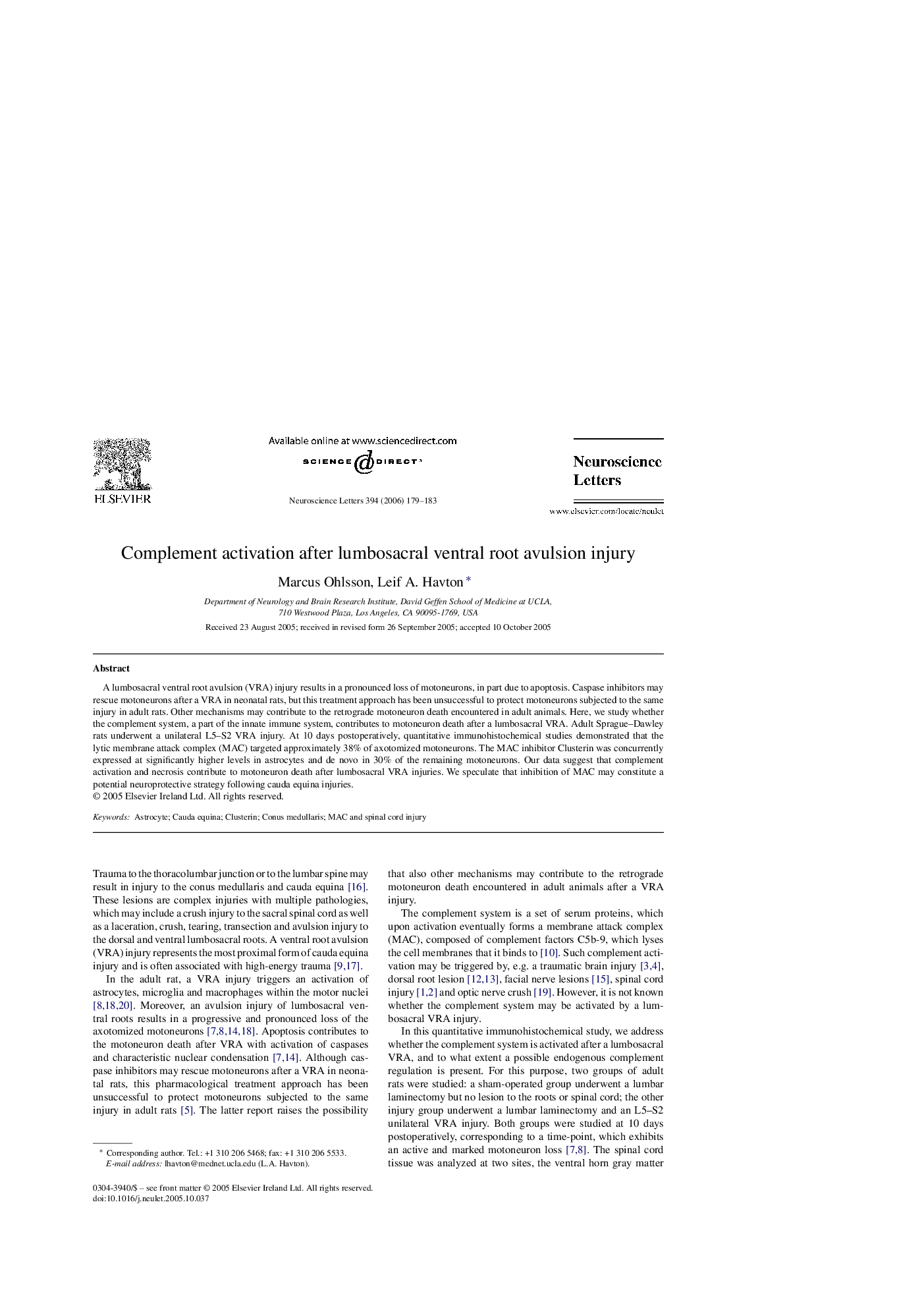| Article ID | Journal | Published Year | Pages | File Type |
|---|---|---|---|---|
| 4351161 | Neuroscience Letters | 2006 | 5 Pages |
Abstract
A lumbosacral ventral root avulsion (VRA) injury results in a pronounced loss of motoneurons, in part due to apoptosis. Caspase inhibitors may rescue motoneurons after a VRA in neonatal rats, but this treatment approach has been unsuccessful to protect motoneurons subjected to the same injury in adult rats. Other mechanisms may contribute to the retrograde motoneuron death encountered in adult animals. Here, we study whether the complement system, a part of the innate immune system, contributes to motoneuron death after a lumbosacral VRA. Adult Sprague-Dawley rats underwent a unilateral L5-S2 VRA injury. At 10 days postoperatively, quantitative immunohistochemical studies demonstrated that the lytic membrane attack complex (MAC) targeted approximately 38% of axotomized motoneurons. The MAC inhibitor Clusterin was concurrently expressed at significantly higher levels in astrocytes and de novo in 30% of the remaining motoneurons. Our data suggest that complement activation and necrosis contribute to motoneuron death after lumbosacral VRA injuries. We speculate that inhibition of MAC may constitute a potential neuroprotective strategy following cauda equina injuries.
Related Topics
Life Sciences
Neuroscience
Neuroscience (General)
Authors
Marcus Ohlsson, Leif A. Havton,
